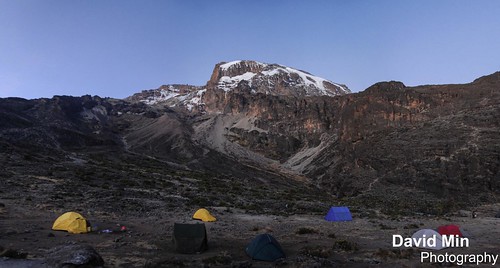Kilimanjaro, with its three volcanic cones, Kibo, Mawenzi, and Shira, is a dormant volcano in Kilimanjaro National Park, Tanzania and the highest mountain in Africa at 5,895 metres above sea level (the Uhuru Peak/Kibo Peak).
There are six official trekking routes by which to climb Mt Kilimanjaro, namely: Marangu, Rongai, Lemosho, Shira, Umbwe and Machame. Of all the routes, Machame is by far the most scenic albeit steeper route up the mountain, which can be done in six or seven days. The Rongai is the easiest and least scenic of all camping routes with the most difficult summit night and the Marangu is also relatively easy, but accommodation is in shared huts with all other climbers. As a result, this route tends to be very busy, and ascent and descent routes are the same.
People who wish to trek to the summit of Kilimanjaro are advised to undertake appropriate research and ensure that they are both properly equipped and physically capable. Though the climb is technically not as challenging as when climbing the high peaks of the Himalayas or Andes, the high elevation, low temperature, and occasional high winds make this a difficult and dangerous trek. Acclimatisation is essential, and even then most experienced trekkers suffer some degree of altitude sickness.
Sunday, September 30, 2012
Mount Kilimanjaro, Tanzania
Tuesday, September 25, 2012
Ngorongoro Crater, Tanzania
The Ngorongoro Conservation Area is a conservation area and a UNESCO World Heritage Site situated 180 km west of Arusha in the Crater Highlands area of Tanzania. The Ngorongoro Crater, a large volcanic caldera, lies within the area.
A population of approximately 25,000 large animals, largely ungulates along with reputedly the highest density of mammalian predators in Africa, lives in the crater. Large animals in the crater include the black rhinoceros, the local population of which declined from about 108 in 1964-66 to between 11-14 in 1995, and the hippopotamus, which is very uncommon in the area. There also are many other ungulates: the wildebeest (7,000 estimated in 1994), the zebra (4,000), the eland, and Grant's and Thompson's gazelles (3,000).
The crater has the densest known population of lions, numbering 62 in 2001. On the crater rim are leopards, elephants – numbering 42 in 1987 but only 29 in 1992 – mountain reedbuck, and buffalo (4,000 in 1994). In the middle of the crater there is a large lake inhabited by hundreds of flamingoes and from a distance, they appear as a pink border of the lake.
Aside from herds of zebra, gazelle, and wildebeest, the crater is home to the "big five" of rhinoceros, lion, leopard, elephant, and buffalo. The crater plays host to almost every individual species of wildlife in East Africa, with an estimated 25 000 animals within the crater.
Sunday, September 2, 2012
NYC - Fast & Furious Yellow Cabs
The taxicabs of New York City, with their distinctive yellow paint, are a widely recognized icon of the city. Taxicabs are operated by private companies and licensed by the New York City Taxi and Limousine Commission. The Commission is a New York City government agency that is best known for its responsibility for the more than 13,237 taxis operating in the city. It also oversees over 40,000 other for-hire vehicles, including "black cars", commuter vans and ambulettes. "Medallion taxis," the familiar yellow cabs, are the only vehicles in the city permitted to pick up passengers in response to a street hail.


